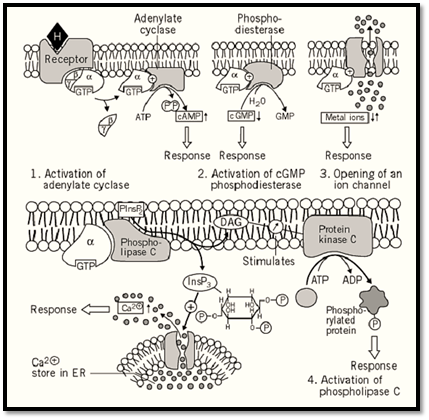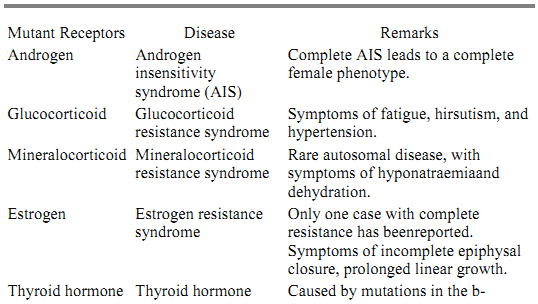

النبات

مواضيع عامة في علم النبات

الجذور - السيقان - الأوراق

النباتات الوعائية واللاوعائية

البذور (مغطاة البذور - عاريات البذور)

الطحالب

النباتات الطبية


الحيوان

مواضيع عامة في علم الحيوان

علم التشريح

التنوع الإحيائي

البايلوجيا الخلوية


الأحياء المجهرية

البكتيريا

الفطريات

الطفيليات

الفايروسات


علم الأمراض

الاورام

الامراض الوراثية

الامراض المناعية

الامراض المدارية

اضطرابات الدورة الدموية

مواضيع عامة في علم الامراض

الحشرات


التقانة الإحيائية

مواضيع عامة في التقانة الإحيائية


التقنية الحيوية المكروبية

التقنية الحيوية والميكروبات

الفعاليات الحيوية

وراثة الاحياء المجهرية

تصنيف الاحياء المجهرية

الاحياء المجهرية في الطبيعة

أيض الاجهاد

التقنية الحيوية والبيئة

التقنية الحيوية والطب

التقنية الحيوية والزراعة

التقنية الحيوية والصناعة

التقنية الحيوية والطاقة

البحار والطحالب الصغيرة

عزل البروتين

هندسة الجينات


التقنية الحياتية النانوية

مفاهيم التقنية الحيوية النانوية

التراكيب النانوية والمجاهر المستخدمة في رؤيتها

تصنيع وتخليق المواد النانوية

تطبيقات التقنية النانوية والحيوية النانوية

الرقائق والمتحسسات الحيوية

المصفوفات المجهرية وحاسوب الدنا

اللقاحات

البيئة والتلوث


علم الأجنة

اعضاء التكاثر وتشكل الاعراس

الاخصاب

التشطر

العصيبة وتشكل الجسيدات

تشكل اللواحق الجنينية

تكون المعيدة وظهور الطبقات الجنينية

مقدمة لعلم الاجنة


الأحياء الجزيئي

مواضيع عامة في الاحياء الجزيئي


علم وظائف الأعضاء


الغدد

مواضيع عامة في الغدد

الغدد الصم و هرموناتها

الجسم تحت السريري

الغدة النخامية

الغدة الكظرية

الغدة التناسلية

الغدة الدرقية والجار الدرقية

الغدة البنكرياسية

الغدة الصنوبرية

مواضيع عامة في علم وظائف الاعضاء

الخلية الحيوانية

الجهاز العصبي

أعضاء الحس

الجهاز العضلي

السوائل الجسمية

الجهاز الدوري والليمف

الجهاز التنفسي

الجهاز الهضمي

الجهاز البولي


المضادات الميكروبية

مواضيع عامة في المضادات الميكروبية

مضادات البكتيريا

مضادات الفطريات

مضادات الطفيليات

مضادات الفايروسات

علم الخلية

الوراثة

الأحياء العامة

المناعة

التحليلات المرضية

الكيمياء الحيوية

مواضيع متنوعة أخرى

الانزيمات
Hormone Receptors
المؤلف:
D. M. Heery et al.
المصدر:
Nature 387, 733–736
الجزء والصفحة:
18-5-2016
3781
Hormone Receptors
Hormones regulate a wide variety of physiological functions, encompassing intermediary metabolism, growth, and cell differentiation. In contrast to the diversity of their phenotypic effects, they have only two fundamental mechanisms of action, depending on their physical chemical characteristics. The lipophilic steroid hormones and thyroid hormones (vitamin D2 and retinoic acid have similar modes of action) are hydrophobic and primarily act intracellularly, modulating gene transcription, whereas the peptide hormones, adrenaline, and melatonin are hydrophilic and act primarily at the cell membrane, triggering a cascade of signal transduction events leading to intracellular regulatory effects. The first step, and a prerequisite for the elicitation of the hormonal effect of both lipophilic or hydrophilic hormones, is binding of the hormone to its appropriate receptor protein. The hormone receptors have the following characteristics: (a) high specificity, so that the receptors can recognize their specific ligand and discriminate between the incoming signals; (b) high affinity for their ligand (KD values in the range of 10–7 to 10–10M); and (c) limited capacity (no more than a few thousand receptor molecules per cell).
1. Lipophilic Hormones
The hydrophobic hormones appear to diffuse across the membrane into the cell (although there are claims of a specific transport mechanism) and bind with high affinity and specificity to their respective receptor protein. These receptors, also known as nuclear receptors, belong to a large family of proteins with similar structures, characterized by various functional domains, through which the biological activity of the molecule is expressed (Fig. 1). The central DNA-binding domain is responsible for recognition and specific interaction with specific palindromic DNA sequences, the hormone response elements. Characteristic of DNA-binding domains are those comprised of two zinc finger structures: One is on the amino-terminal side making specific contact with the DNA major groove, and the other is responsible for the specific homodimerization of the activated receptor. Other important domains are (a) the ligand-binding
domain, which is at the carboxy terminus of the receptor, (b) nuclear import, export motifs, (c) heat-shock protein binding sites, and (d) transactivation domains, which can be at either the N- or C-terminal regions of the receptor. In the absence of hormone, the receptor is complexed to other proteins, such as the heat shock protein hsp90, immunophilins, and smaller peptides. Upon hormone binding, the complex dissociates and the receptor protein is released and forms homodimers, which then bind to the hormone response elements (HREs). The HREs are enhancer elements that are activated by the ligand–receptor complex. The result of this binding is stimulation (or, in some cases, inhibition) of transcription of the appropriate gene. The mechanism is not yet elucidated, but it also involves interaction of the hormone–receptor complex with other nuclear proteins, such as transcription factors, “adaptor proteins,” “coactivators,” and transacetylases (1-4). The primary transcript is subsequently processed, and the resulting messenger RNA is translated into the respective protein. The nature of the protein determines the phenotypic expression of the hormone action: For example, if the protein is an enzyme involved in gluconeogenesis, the blood glucose level will change; if it is a growth factor, cell replication will be affected.

Figure 1. Mechanism of action of lipophilic hormones. (a) Mechanism of action of lipophilic hormones. (b) Receptors of lipophilic hormones. [From Ref. 10, with permission (slightly modified).]
The effects of steroid hormones are usually long-term, needing hours to be exerted. It is becoming increasingly evident, however, that some steroid hormones act very rapidly, by binding to membranes and altering the intracellular concentrations of Ca2+, Na+, and other ions (5). The nature of the membrane-binding sites (eg, whether they are parts of a pore complex) is not known.
2. Hydrophilic Hormones
The hydrophilic hormones are not able to penetrate the cell and instead interact with membrane receptors (Fig. 2). Two types of membrane receptors for hydrophilic hormones have been characterized, Type I and Type III. The third type, Type II, represents ion channels, which are mainly regulated by neurotransmitters.

Figure 2. Mechanism of action of hydrophilic hormones. [From Ref. 10, with permission (slightly modified).]
2.1. Type III Receptors
These receptors are integral membrane proteins, with seven a-helical domains spanning the membrane, an extracellular domain that is important for ligand recognition, and an intracellular one important for signal transduction. Binding of the cognate ligand induces a conformational change in the receptor that is further transmitted through a family of guanine nucleotide-binding proteins (G proteins ) associated with the receptor (Fig. 2). The G proteins are trimers of a, b, and g subunits. In the resting state, the a subunit has GDP bound. Interaction of the hormone with the receptor leads to exchange of GDP for GTP on the a subunit and dissociation of the G complex into a separate a-subunit and a b/g dimer. The free a subunit is the effector molecule that activates enzymes involved in the production of second messengers, such as the adenylate cyclases, which catalyze 3′,5′-cyclic AMP synthesis from ATP, and phospholipase C, which catalyzes the production of inositol 1,4,5-triphosphate (IP3) and diacylglycerol (DAG) from phosphatidyl inositol bisphosphate. Cyclic AMP and DAG are allosteric modulators of protein kinases A and C, respectively, whereas the hydrophilic IP3 reaches the endoplasmic reticulum and acts there by releasing Ca+2 from storage sites (6-8). Activation of the protein kinases leads to phosphorylation at serine/threonine residues of a large variety of proteins, which are activated in their various functions, such as enzymes, structural proteins, and transcription factors.
The free a subunit of the G protein, due to its intrinsic GTPase activity, hydrolyzes its bound GTP to GDP. When the hormonal stimulus ceases, the GDP is not replaced by GTP, and the G-protein trimer is reconstituted. Consequently, the system thus returns to its initial inactive condition.
2.2. Type I Receptors
These receptors are best exemplified by the insulin receptor. It is composed of two identical a subunits that are extracellular and two identical b subunits, with extracellular, transmembrane, and intracellular domains. The intracellular domains possess intrinsic protein kinase activity. Binding of the cognate ligand induces a conformational change and dimerization of the receptor molecule. This leads to activation of the kinase activity of the receptor and phosphorylation of tyrosine residues within the kinase domain and at other sites of the receptor. These last sites create docking sites for downstream signal transduction molecules containing SH2 domains, which are activated by a variety of mechanisms (eg, tyrosine phosphorylation, conformational changes). Subsequently, by way of intermediate second messenger molecules, they trigger metabolic processes, gene transcription, and DNA replication . The importance of second messenger formation is that the original hormonal signal is amplified by two to three orders of magnitude and that multiple signal effects are integrated by using the same second messenger.
3. Medical Disorders
A series of endocrine diseases result from genetic defects of the receptors for both the lipophilic and the hydrophilic hormones. They are manifested as resistance syndromes, with elevated blood levels of the specific hormone, because the regulatory feedback inhibitory cycle is not functioning. Mutations have been found in various domains of the receptors, leading to partial or total loss of response to hormonal stimuli. In more rare cases, the receptors have lost their function, but in addition they inhibit the action of the wild-type receptor (dominant negative mutants). Table 1 shows an overview of diseases caused by mutations in genes coding for members of the nuclear hormone receptor family.
Table 1. Some Diseases Caused by Mutations in Genes Coding for Members of the Nuclear Hormone Receptor Superfamily a


a Ref. 9, with permission (slightly modified).
References
1. U. Clever and P. Karlson (1960) Exp. Cell Res. 20, 623–626.
2. M. Beato, P. Herrlich, and G. Schutz (1995) Cell 83, 851–857.
3. D. M. Heery et al. (1997) Nature 387, 733–736.
4. J. Iorchia et al. (1997) Nature 387, 677–683.
5. M. Wehling (1994) Annu. Rev. Physiol. 59, 365–393.
6. A. Hall (1990) Science 249, 635–640.
7. W. J. Tang and A. G. Gilman (1992) Cell 70, 869–872.
8. N. DiVecha and R. F. Irvine (1995) Cell 80, 269–278.
9. A. Baniahmad, M. Eggert, and R. Renkawitz (1997) In Transcription Factors in Eukaryotes (A. G. Papavissiliou, ed.), Springer, Heidelberg.
10. J. Koolman and K.-H. Rohm (1996) Color Atlas of Biochemistry, Thieme, Stuttgart.
 الاكثر قراءة في مواضيع عامة في الاحياء الجزيئي
الاكثر قراءة في مواضيع عامة في الاحياء الجزيئي
 اخر الاخبار
اخر الاخبار
اخبار العتبة العباسية المقدسة

الآخبار الصحية















 قسم الشؤون الفكرية يصدر كتاباً يوثق تاريخ السدانة في العتبة العباسية المقدسة
قسم الشؤون الفكرية يصدر كتاباً يوثق تاريخ السدانة في العتبة العباسية المقدسة "المهمة".. إصدار قصصي يوثّق القصص الفائزة في مسابقة فتوى الدفاع المقدسة للقصة القصيرة
"المهمة".. إصدار قصصي يوثّق القصص الفائزة في مسابقة فتوى الدفاع المقدسة للقصة القصيرة (نوافذ).. إصدار أدبي يوثق القصص الفائزة في مسابقة الإمام العسكري (عليه السلام)
(نوافذ).. إصدار أدبي يوثق القصص الفائزة في مسابقة الإمام العسكري (عليه السلام)


















